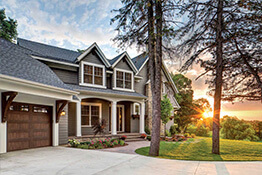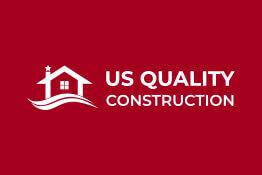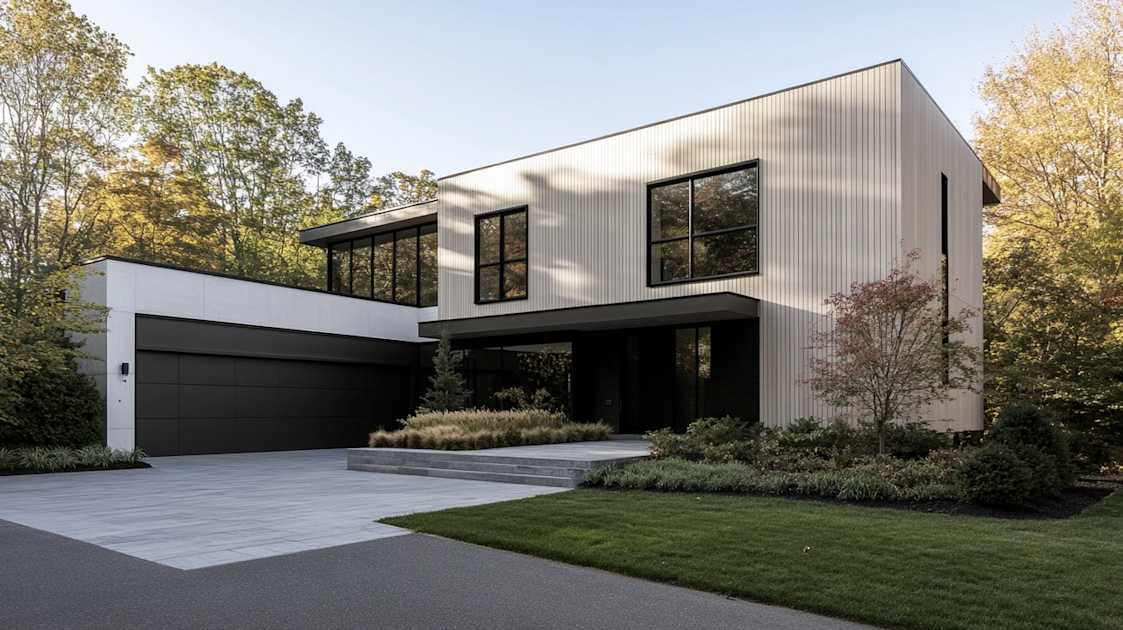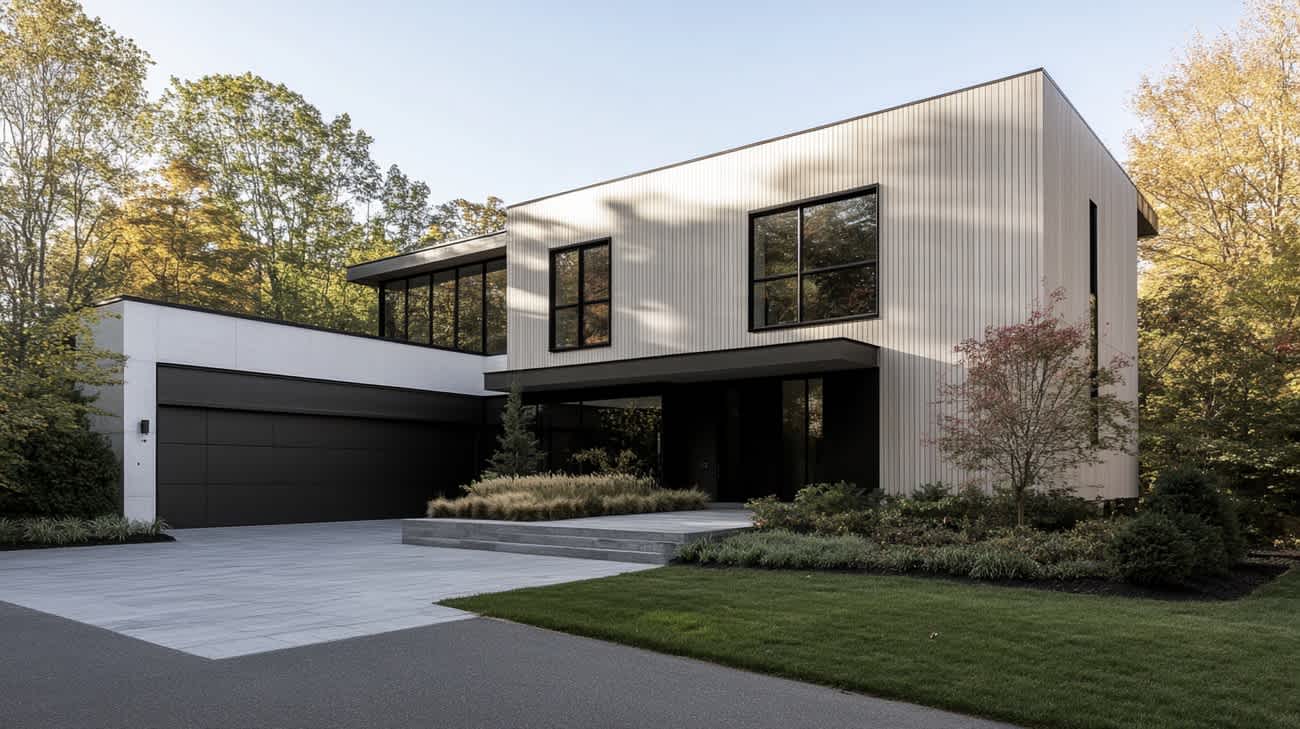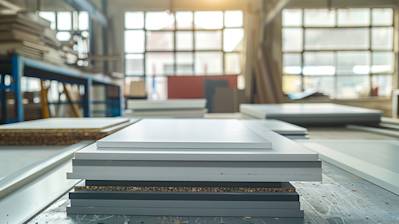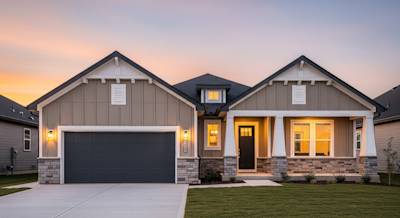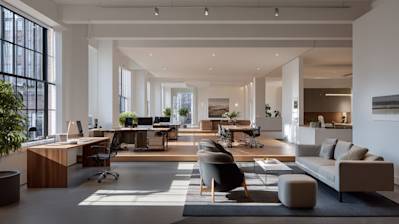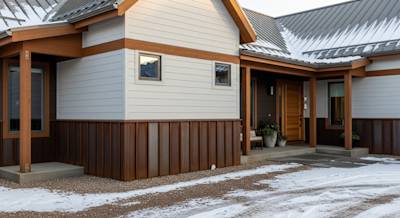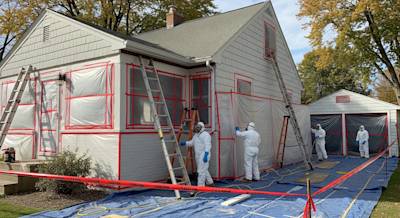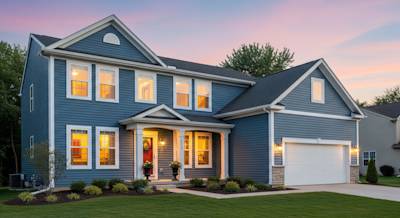Board and batten siding has been creating ripples in the architectural world with its unique style and unmatched versatility. Whether it is for its striking design accent or its durability, this timeless design option has been a favorite among homeowners and architects for years. From adding aesthetic appeal to providing functionality, board and batten siding has tons to offer.
So, what exactly is board and batten siding, and why should you consider it when planning your next remodeling project? This comprehensive guide will help you understand the ins and outs of this popular siding type and why it has earned its place in the design industry.
Definition of Board and Batten Siding
Traditionally, board and batten siding consisted of wide boards left a bit apart, covered by narrow pieces of wood called battens. The main purpose of the battens was to cover the gaps and prevent moisture seepage. The distinctive vertical pattern formed by this unique arrangement is what has made board and batten siding the much-loved design element it is today.
Aesthetic Appeal of Board and Batten Siding
One cannot stress enough the visual appeal of board and batten siding. It offers a range of design possibilities, with limitless options for customization. A few features that set it apart include:
- Distinctive Appearance: Board and batten's unique style adds a rural, rustic feel, while also providing a contemporary touch to any space.
- Customizable: Available in a variety of materials, sizes, and colors, board and batten's flexibility allows it to beautify any architectural style.
- Vertical Pattern: Its vertical arrangement not only draws the eye upwards, creating an illusion of height, but also adds depth and texture to a flat surface.
Durability and Functionality of Board and Batten Siding
While aesthetic appeal can attract homeowners initially, the lasting quality and functionality are what truly make board and batten siding remarkable:
- Weather-Tight: Excellent at protecting interiors from harsh weather conditions, it's a stunning option for areas prone to high wind, rain, or frost.
- Thermal Efficiency: Its structure aids in insulation, promoting energy efficiency in homes.
- Long-lasting: Board and batten siding, especially when made of durable materials like cedar or vinyl, can withstand the test of time with minimal maintenance.
Materials Used in Board and Batten Siding
Several materials can be used for board and batten siding, each offering different advantages:
- Wood: Classic, warm, and organic, it suits traditional homes perfectly. Cedar is the most common wood used, known for its longevity and resistance to decay.
- Vinyl: Budget-friendly and super low-maintenance, vinyl gives the appearance of real wood without the hassle of upkeep.
- Metal: Typical in industrial design, metal board and batten adds a modern, distinctive look to buildings.
- Composite: Combining the benefits of wood and vinyl, composite board and batten siding offers durability and aesthetics without compromising on either.
Choosing the Right Color for Your Siding
Color choice plays a significant role in determining the ultimate appearance of your board and batten siding:
- Light Colors: These can make the building appear larger and are great for houses surrounded by lush green landscapes.
- Dark Colors: These create a dramatic and striking look — particularly effective in enhancing the modern appeal of the home.
- Earthy Tones: These colors can effortlessly blend the house into the natural surroundings, giving it a harmonious outlook.
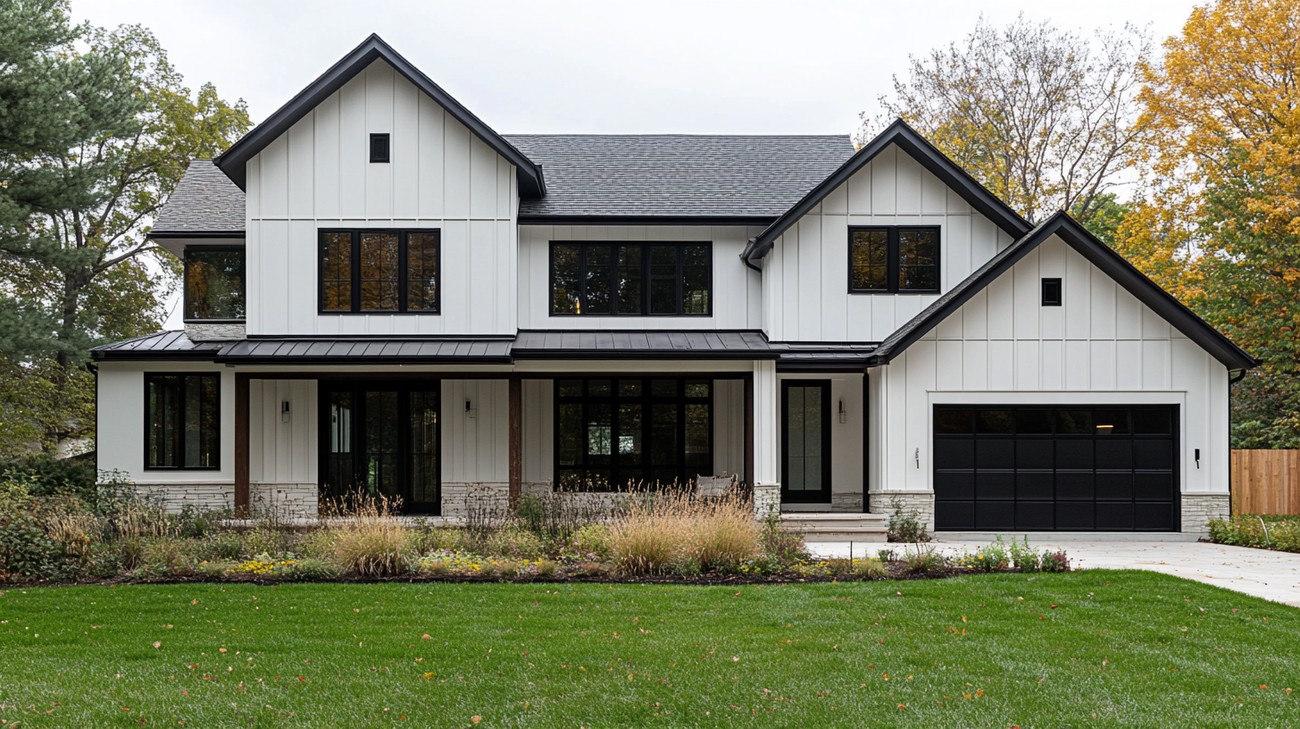
Frequently Asked Questions about Board And Batten Siding
What materials are used for board and batten siding?
Traditional board and batten siding is typically made from wood, which can be cedar, pine, redwood or any other wood suitable for exterior use. Nowadays, board and batten siding also can be made from a variety of other materials, including vinyl, fiber cement, and even metal. The choice of material depends on your personal preference and the climate where you live.
Is board and batten siding suitable for all climates?
Yes, board and batten siding is suitable for all kinds of climates. However, the material you choose will affect its durability and maintenance requirements. For example, wood is a popular choice for board and batten siding but requires regular maintenance to prevent decay and other weather-related damage. On the other hand, materials like vinyl and fiber cement are more durable and require less maintenance.
How long does board and batten siding last?
The lifespan of board and batten siding depends largely on the material used and how well it is maintained. Wood siding can last between 10 to 20 years with proper care, while vinyl or fiber cement board and batten siding can last upwards of 40 years or more.
How do I maintain my board and batten siding?
Maintenance of board and batten siding primarily involves regular cleaning to keep it looking its best and inspecting it for any signs of damage. For wood siding, you may also need to re-stain or repaint it every few years to maintain its look and to protect it from the elements. For vinyl, fiber cement or metal, a simple wash with soap and water is usually enough.
Can board and batten siding be painted?
Yes, board and batten siding can be painted to suit your aesthetic preferences. However, it's important to keep in mind that different materials require different types of paint. For wood board and batten siding, for example, you might need to use a specific type of exterior paint or stain.
What is the typical cost of board and batten siding?
The cost of board and batten siding can vary a great deal depending on the material used, the size of the house, and the region in which you live. On average, you can expect to pay somewhere between $2.50 to $7.00 per square foot for materials and installation. Remember, choosing a more durable material might have a higher up-front cost, but could save you money on maintenance in the long run.
Are there different styles of board and batten siding?
Yes, board and batten siding can be installed in a variety of styles. The most common style is the traditional one, where wide 'boards' are installed first, followed by narrow 'battens' that cover the seams. However, reverse board and batten siding, where the boards are narrower than the battens, is also popular for a more distinctive look.
Can I install board and batten siding myself?
With the right tools and skills, it is possible to install board and batten siding yourself. However, it's a labor-intensive job that can be challenging for those without appropriate experience. If you're not confident, it's always a good idea to hire a professional to ensure the job is done right.

Pros of Board and Batten Siding
Aesthetics
Unique and Customizable Styles
One of the significant pros of board and batten siding is its aesthetic appeal. Its distinctive, rustic design with alternating wide and narrow boards can lend a striking, unique look to any home. The board and batten style is especially effective in enhancing the character of cottage or country-style homes, but it is versatile enough to suit modern and contemporary designs as well. Moreover, due to its basic design structure, it can be easily customized to create different patterns or styles, depending on homeowners' tastes and preferences.
Wide Range of Material and Color Options
Board and batten siding is available in a variety of materials, such as wood, vinyl, fiber cement, and even metal. This wide range of material options allows homeowners to choose the one that best suits their needs and budget. In addition, each material type can be painted or stained in virtually any color, thus allowing homeowners to personalize their homes according to their décor theme and style preference.
Durability and Longevity
Weather Resistance
Board and batten siding offers excellent resistance against harsh weather conditions. Whether it's heavy snow, intense sunlight, or strong winds, this type of siding can withstand them all without compromising its structural integrity. This makes it an especially good option for homes located in regions experiencing significant seasonal weather changes throughout the year.
Long Lifespan
When installed and maintained properly, board and batten siding can last for decades. Its durability is one of the main reasons why many homeowners prefer this type of siding. Certain material options, like fiber cement or metal, offer even longer lifespans and require minimal maintenance, making them fantastic choices for homeowners interested in a long-term investment.
Cost-effectiveness
Board and batten siding installation can be relatively more affordable compared to other types of siding, such as stucco or brick. Moreover, its durability and long lifespan mean that homeowners will save on repair and replacement costs in the long run. Different material options also allow homeowners to choose the one that fits their budget the best.
Cons of Board and Batten Siding
Installation Challenges
Professional Help Required
One major downside of board and batten siding is that its installation requires professional help, and DIY is not recommended. The process involves measuring and cutting boards to precise lengths, correctly spacing battens, ensuring waterproof seal, etc., which can be complex and time-consuming for an amateur. This means homeowners will need to factor in professional installation costs when considering board and batten siding.
Demands Precision
Board and batten siding demands precise installation. Minor flaws, such as uneven boards or battens, can lead to serious issues like warping of boards, water penetration, etc., compromising the entire structural integrity of the siding and leading to costly repairs.
Maintenance Issues
Regular Upkeep Required
While board and batten siding is durable, it still requires regular maintenance, especially if it's made of wood. The need to periodically clean, stain, or re-paint the siding can be a substantial downside for homeowners seeking low-maintenance options. Moisture retention can also lead to rot and mold issues, especially in wood siding, if not appropriately addressed.
Costs
While the initial cost of board and batten siding may be on the cheaper side, total costs can add up quickly when you factor in ongoing maintenance and repair costs. Unexpected repair costs due to poor installation can also inflate the total cost of ownership of board and batten siding over time.
Limited Heat Insulation
Board and batten siding with all its pros does have one significant con: it doesn't provide as much heat insulation as other types of siding. This implies that homeowners might have to shell out extra for additional insulation, especially in areas with harsh winters. This can lead to increased heating and energy costs, thereby adding to the overall cost of the siding.

Myths and Misconceptions About Board and Batten Siding
Board and batten siding has been used for centuries on houses and barns alike. Despite its popularity, there are still many misconceptions about this traditional style of house siding. Here we'll try to debunk some of the most prevalent myths and misunderstandings.
Myth 1: Board and Batten Siding is Only for Old or Country Homes
Given its historic popularity, many people associate board and batten siding with old-homes, barns, or farmhouses.
Clarification:
While it is true that board and batten siding is often seen on rural buildings, this style can suit modern, urban homes just as well. It's versatility in terms of design and color options makes it an excellent choice for a variety of architectural styles, from contemporary to traditional.
Myth 2: Board and Batten Siding is Not Durable
Another common misconception is that board and batten siding is not very durable and won't last as long as other types of siding.
Clarification:
With proper installation and regular maintenance, board and batten siding can last for decades, potentially even outlasting other types of siding. It's also worth mentioning that this type of siding is especially good at withstanding strong winds and extreme temperature fluctuations.
Myth 3: Board and Batten Siding Requires Constant Maintenance
Some people believe that board and batten siding requires constant, time-consuming maintenance to keep it in good shape.
Clarification:
In reality, all types of siding require some level of maintenance, and board and batten is no exception. This maintenance, however, is usually just a thorough cleaning every year or so and prompt repairs if any damage occurs. Plus, with advancements in materials, many board and batten sidings now come with long-lasting finishes that require less upkeep.
Myth 4: Board and Batten Siding is Very Expensive
Another common myth is that board and batten siding is a costly siding option, prohibitively so for many homeowners.
Clarification:
The cost of board and batten siding can vary greatly depending on the materials used and the complexity of the installation. However, considering its durability and lifespan, it can be a cost-effective choice in the long run. Furthermore, it offers a distinctive look that can add significant curb appeal and value to your home.
Myth 5: There are Limited Design and Color Options for Board and Batten Siding
A lot of people think that board and batten siding only comes in a limited range of color and design choices.
Clarification:
Board and batten siding actually offers a wide range of flexibility in terms of design. It can be installed in various patterns to create unique and eye-catching designs. Moreover, it can be painted or stained into virtually any color to match your home’s aesthetic.
In conclusion, while board and batten siding does have a few considerations to keep in mind, many of the common myths surrounding it are not based in fact. Understanding the truths behind these misconceptions can help homeowners make more informed decisions about the best siding option for their homes.
Summary
Board and batten siding has stood the test of time, offering a distinct appeal to homes that few other siding options can provide. Despite being simple in design, it's known for adding depth and texture to any architectural style. With its unique vertical pattern, it achieves a balance between rustic aesthetic and modern minimalism, making it a popular choice among homeowners and architects alike.
Durable and cost-effective, board and batten siding is an investment worth considering. Crafted to withstand the outdoor elements, it minimizes the hassle of repeated maintenance in the long run. It's available in a wide variety of materials, like wood, vinyl, and fiber cement, depending on your budget and preferences. Plus, it offers an added bonus of energy efficiency, making your home not only visually pleasing but also practically sustainable.
If you're looking to give your home a facelift, board and batten siding might just be the answer. It captivates attention with its timeless charm. From cottages to contemporary homes, it brings out the unique character of any house. Truly, the details make all the difference. With board and batten siding, you don't only get a durable shield for your home but also a seamless blend of style and functionality.
About US Quality Construction of Lexington
US Quality Construction of Lexington is your reliable construction partner located in the beautiful city of Lexington, KY. We take great pride in crafting exceptional residential and commercial spaces tailored to meet your unique needs. Boasting a team of dedicated professionals with decades of combined experience, our focus is always on quality, efficiency, and craftsmanship in all projects we undertake. Whether you're planning a modest renovation or a large-scale construction project, US Quality Construction of Lexington is committed to bringing your vision to life while ensuring the utmost safety and sustainability standards. Experience unrivaled service, unwavering dedication, and undeniable quality with US Quality Construction of Lexington; where we build your dreams.
Tags: wood siding, exterior design, home renovation,
